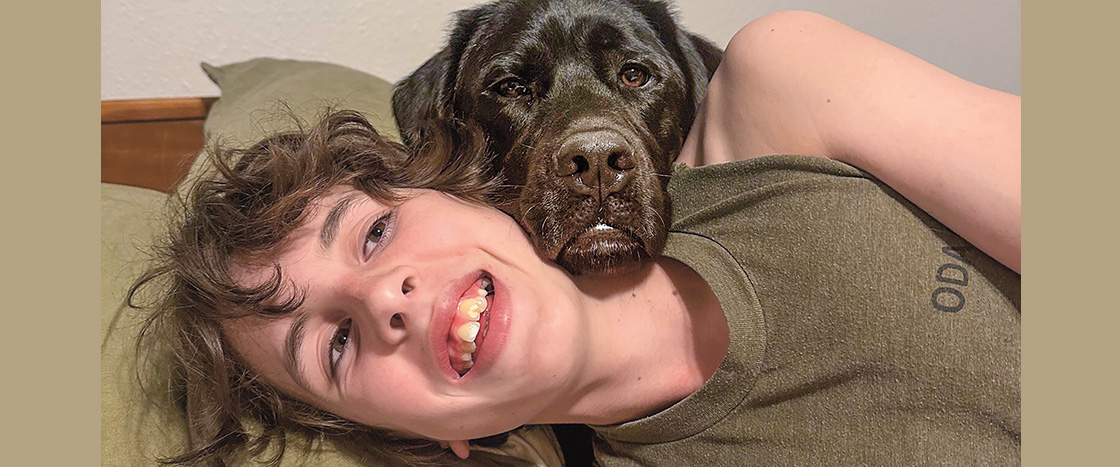Elijah Logue has always loved to wrestle, run track, and hike in the mountains near his home. But for years, the Colorado Springs middle schooler used a special tool to get around—a white cane. Elijah, age 13, has been blind since birth (see What Visual Impairments Can Look Like). Like many others who are blind, he would sweep the long, thin cane back and forth to sense his surroundings. Even with the cane, Elijah would sometimes bump into people or objects. He had to walk slowly to move safely. Elijah wanted to become more independent.
In July 2024, Elijah started a partnership that changed everything. He teamed up with a guide dog named Maple! This pooch is so well-trained, he’s replaced Elijah’s cane—they even walk really fast together! “Having Maple help me navigate safely and having him as a friend has changed my life,” says Elijah.
How did Maple learn how to be a guide dog? The pup went to school!
Elijah Logue has always loved to wrestle and run track. And he enjoys hiking in the mountains near his home. Elijah goes to middle school in Colorado Springs. But for years, he used a special tool to get around. It was a white cane. Elijah is 13 years old. He has been blind since birth (see What Visual Impairments Can Look Like). Many blind people use the long, thin cane. Elijah moved it back and forth to sense things around him. But sometimes, he still bumped into people or objects. He had to walk slowly to be safe. Elijah wanted to be more independent.
In July 2024, things changed. Elijah teamed up with a partner. It was a guide dog named Maple! This pup is very well-trained. He replaced Elijah’s cane. They even walk really fast together! “Having Maple help me navigate safely and having him as a friend has changed my life,” says Elijah.
Maple had to learn to be a guide dog. But how? The pup went to school!

